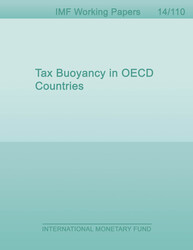
Tax Buoyancy in OECD Countries
By how much will faster economic growth boost government revenue? This paper estimates short- and long-run tax buoyancy in OECD countries between 1965 and 2012. We find that, for aggregate tax revenues, short-run tax buoyancy does not significantly differ from one in the majority of countries; yet, it has increased since the late 1980s so that tax systems have generally become better automatic stabilizers. Long-run buoyancy exceeds one in about half of the OECD countries, implying that GDP growth has helped improve structural fiscal deficit ratios. Corporate taxes are by far the most buoyant, while excises and property taxes are the least buoyant. For personal income taxes and social contributions, short- and long-run buoyancies have declined since the late 1980s and have, on average, become lower than one.
Publication date: June 2014
ISBN: 9781498305075
$18.00
Add to Cart by clicking price of the language and format you'd like to purchase
Available Languages and Formats
| English |
Prices in red indicate formats that are not yet available but are forthcoming.
Topics covered in this book
This title contains information about the following subjects.
Click on a subject if you would like to see other titles with the same subjects.
Economics- Macroeconomics , Economics / General , International - Economics , Tax buoyancy , Automatic stabilizers , Error Correction Model , OECD
Summary
Copyright © 2010 - 2024
Powered by:
AIDC



